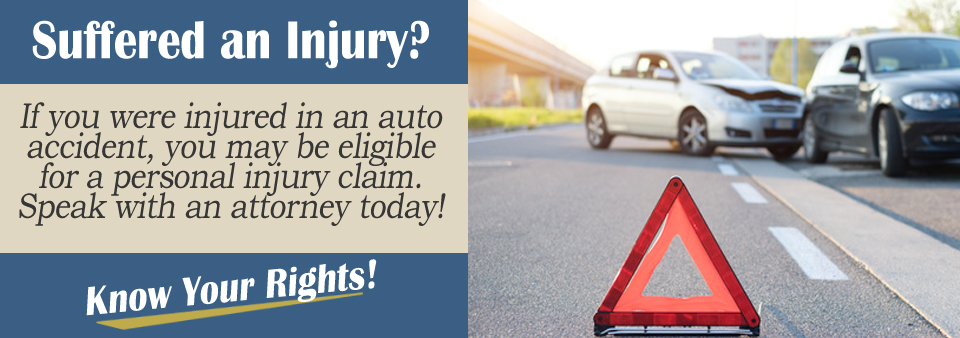Table of Contents
- What Are The Right-Of-Way Rules When Vehicles Are Merging?
- Yielding When Merging
- Merging Lanes Right of Way Scenarios
- How To Merge Into Traffic
- Accidents Happen When Vehicles Are Merging
- Who is At-Fault When Two Cars Merge Into The Same Lane?
- Determining Fault In A Merging Crash
- Consult With a Personal Injury Lawyer
- Additional Resources
When two lanes merge into one, you might be left wondering who has the right of way. The car in the through lane, or the lane that is not ending, has right of way. However, the proper way to handle the situation is for all vehicles to slow down and drive courteously.
There are two kinds of drivers on merging roads. One kind will start moving over into the merging lane early on to avoid traffic problems. The other kind of driver waits until the last minute, which causes a traffic jam with cars clogging both lanes. This kind of driving often leads to road rage, which is much more likely to cause an accident.
When you are driving, there are times where you will encounter two lanes merging into one. You may be confused about who has the right of way and who should make the next move.
This can be a tricky process, so you need to make sure that you understand how the right of way works and how it applies to the different kinds of intersections. You want to make sure you merge lanes at the proper time and don’t cause an accident.
What Are The Right-Of-Way Rules When Vehicles Are Merging?
Merging accidents can be quite hectic. Merging traffic laws state that both drivers have the responsibility of safely merging. The main part of safely merging is paying attention and making the right judgment on when to merge.
One of the main parts of merging lanes is yielding to oncoming traffic. When you are trying to merge onto a highway, you must yield to the through traffic. Be mindful of which vehicle has the right of way and yield accordingly. If failure to yield is the cause of the accident, you can recover different types of damages associated with the crash, such as personal injury and property damage.
Yielding When Merging
The driver of the vehicle in the lane that is ending, is supposed to yield to the vehicles in the other lane. The cars in the lane that is ending should only merge when it is safe to do so. When merging, drivers should make sure they have enough space to move their vehicle over into the other lane. You will have to judge space between vehicles and the speed of the vehicles.
You will need to use your signal to indicate that you are merging into the other lane of traffic, so the other drivers will know you are indeed making a lane change. When the other drivers see your signal, they should adjust their speed to allow you to enter the other lane. However, be cautious, as some drivers might accelerate , which could lead to a collision while merging. Both lanes of traffic should be courteous and work together.
Merging Lanes Right of Way Scenarios
If you don’t properly yield, you run the danger of causing a collision with pedestrians, cyclists, or other vehicles. Here are some of the different kinds of intersections that you may encounter and how you should proceed.
- Controlled intersectionseither have a stop sign or a traffic light. These are simple because you have a light or a sign to use as a guide. If you and another vehicle arrive at the stop signs at the same time, the car to your right has the right of way.
- Uncontrolled intersectionsdon’t have traffic lights or stop signs, so you don’t have any guide. You should yield to vehicles already at the intersection. The person at the intersection first will go first. Much like the process at a stop sign, you should yield to the vehicle on your right side when you are unsure about how to proceed.
- T-Intersections occur when the road dead ends into a through street. If you are driving on a dead-end road, yield to traffic going from the left and right.
- Multiple lane intersections are when a one-lane road or a two-lane road intersect into a road that is much larger. Those operating vehicles on the smaller road should yield to vehicles that are on the larger road. Often, the speed limit is greater for the larger road, so take that into consideration.
- Using off and on rampsrequire attentiveness and skill. It can be challenging to get off and on highway exit ramps. This is especially true if there is heavy traffic or multiple lanes. The drivers traveling on the access ramp must yield to vehicles that are traveling on the exit ramp. There are times when traffic exiting an interstate merges into its own separate lane, but drivers on the access ramp should still yield. Vehicles that are getting on the highway must yield to all traffic that is approaching them from behind.
There are several other situations in which drivers should yield such as:
- At a stop sign
- To pedestrians with a seeing eye dog
- To people with a white cane
- When turning left
- When driving on a road that isn't paved that intersects with a road that is paved
- At T-intersections where you should yield to cars on the through-road
- When returning on the road after a vehicle has been parked
How To Merge Into Traffic
When you are merging onto the highway, you should be attentive. Here are some tips on how to merge safely:
- You must judge the speed of other vehicles and make sure that there is enough room between vehicles before you make your move into the traffic.
- As you travel along the ramp, you should accelerate. When you enter the lane of traffic, don’t slow down or stop. Instead, you need to go with the flow of traffic. You don’t want to cause a collision because someone rear-ends you.
- You need to properly judge the time, speed, and space before your vehicle maneuvers into the other lane of traffic. Don’t slow down or hesitate, but don’t try to merge in when you cannot. If a car sped up and hit you while merging, it would indicate that the other driver did not properly adjust their speed or correctly judge the space between vehicles.
Accidents Happen When Vehicles Are Merging
Merging is a common time for vehicles to crash because a driver might:
- Fail to give a signal
- Misjudge distance or speed
- A car might cut in too quickly
- Another vehicle might be in a driver's blind spot
Merging accidents lead to various damages and could cause serious injuries. While a driver should always be attentive when behind the steering wheel, extra care should be used when vehicles are merging. Be prepared to adjust speed and always check your blind spot to avoid contact with another vehicle.
For more information on accidents that occur while merging, visit Hit While Merging on a Major Highway.
Who is At-Fault When Two Cars Merge Into The Same Lane?
The driver who is at fault when two cars merge into the same lane is the driver who was responsible to keep the other driver safe. If one driver is texting, under the influence, or driving recklessly when they are merging, and cause an accident, they may be found at fault.
The negligent driver in a car merging lane accident is often the driver who is in the process of merging when the collision happens. It will be necessary to gather evidence of a merging driver’s negligence to show you deserve compensation.
In an at-fault state, you could seek compensation by filing a claim with the insurance of the driver whose negligence caused your accident. Filing a lawsuit and seeking damages in court is also an option if the insurance company won’t offer a fair settlement.
For more information on who is at fault, visit Who is at Fault in an Auto Accident While Merging?
Determining Fault In A Merging Crash
If you have been in an accident when either you or another driver were merging, you will need to call the police. The officer will investigate the crash and try to determine fault. The point of impact, the severity of the damages, the injuries, and other factors are all taken into consideration to determine fault and liability.
Witness statements and dash or traffic camera footage that caught the accident on video can be helpful in determining fault and liability for a merging crash. If you hit a car in the rear, then usually the driver in the back car is to blame, but there are situations when the car in front could be held partially responsible. That is true if the car cuts you off or if the car merges in and then slows down.
When there are sideswipe crashes it could be because a car fails to signal, or because a car is traveling too fast. Drivers have a duty or a responsibility to make sure that they change lanes properly and that they make sure it is safe to make the move and merge before they do so.
When you are talking to the officer and giving your statement about the crash, you should be factual. Don’t state opinions, but only state the facts. The officer needs the basic details so a thorough and accurate investigation can be conducted. When you report the accident to your insurance, the insurance company will also investigate the crash.
The insurance company wants to determine liability so it will not have to pay out for claims that they are not liable for. When you retain an accident injury lawyer, your attorney will also conduct a more thorough investigation into the accident and determine fault.
Because personal injury lawyers take cases on a contingency basis, your attorney will not be paid until you win your claim. Your lawyer will work to see that you are treated fairly throughout the claims process.
Because there is a statute of limitations for pursuing a personal injury claim, you should not delay getting your claim underway. Waiting too long can lead to your inability to pursue a claim and recover compensation for your damages.
Consult With a Personal Injury Lawyer
If you have been involved in a merging accident, you may want to speak with a personal injury lawyer. The statute of limitations for personal injury claims vary from one state to another, so you should talk with an attorney right away. You don’t want to wait too long to try to recoup compensation for your damages.
Fill out the Free Case Evaluation to get connected with a personal injury lawyer who subscribes to the website and may be able to help with your case. A lawyer can investigate your accident, determine which damages you suffered, help write a car accident demand letter, and then help you determine a fair dollar amount for your settlement or judgment.

